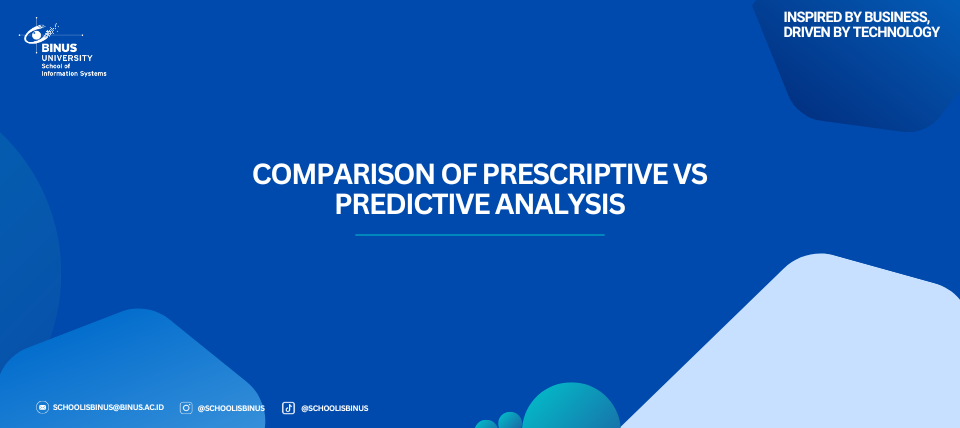Comparison of Prescriptive vs Predictive Analysis

Introduction
In the analytics maturity ladder, predictive and prescriptive analysis sit above descriptive and diagnostic techniques, but they solve different problems. Predictive analytics forecasts what is likely to happen; prescriptive analytics recommends what actions to take given those forecasts (or other constraints). This article compares the two across purpose, methods, inputs, outputs, business value, typical use cases, limitations, and implementation considerations — using recent, trustworthy sources from the last five years.
Short Definitions
Predictive analysis: uses historical and real-time data plus statistical or ML models to estimate future events or trends (e.g., demand next month, churn probability). Its main question: What is likely to happen?
Prescriptive analysis: uses predictive outputs, optimization, simulation, and decision-science techniques to recommend one or more actions that lead to desired outcomes under constraints (e.g., inventory reorder points that minimize cost while meeting service levels). Its main question: What should we do?
Core Methods & Technologies
Predictive: regression, time-series, classification, ensemble models, and modern ML (XGBoost, deep learning). Requires feature engineering, model validation, and often probabilistic outputs (confidence scores).
Prescriptive: optimization algorithms (linear, integer, nonlinear programming), simulation (Monte Carlo, discrete-event), reinforcement learning for sequential decisions, and decision rules that incorporate objectives and constraints. Prescriptive systems commonly wrap optimization around predictive model outputs.
Inputs and Outputs
Inputs
- Predictive: historical records, sensors, transactional logs, features engineered from domain knowledge.
- Prescriptive: everything predictive consumes plus business rules, cost functions, resource constraints, and “what-if” scenario parameters.
Outputs
- Predictive: probabilities, point forecasts, risk scores, expected values.
- Prescriptive: ranked actions, optimized parameter settings, policy recommendations, automated decision commands (when integrated).
Business Value and Typical Use Case
Predictive helps prioritize effort and anticipate events: churn scoring, demand forecasting, fraud detection. It reduces surprise and enables planning.
Prescriptive turns those forecasts into decisions that optimize outcomes: dynamic pricing, route planning and logistics optimization, production scheduling, portfolio rebalancing, personalized treatment recommendations in healthcare. Organizations that operationalize prescriptive models can close the loop from insight to action and capture more direct value
Industry examples : McKinsey and other consultancies highlight growing adoption of prescriptive techniques in supply chain and operations to improve resilience and cost efficiency; Gartner also emphasizes prescriptive analytics as action-oriented and increasingly integrated into business processes.
When to choose which (simple rule-of-thumb)
- Use predictive when you need improved visibility into future events or risks but decisions are still primarily human-led.
- Use prescriptive when you want the system to recommend or automatically execute decisions that optimize business objectives under constraints — and when you can supply accurate cost/constraint inputs and handle integration complexity.
References
Gartner. (n.d.). What is data and analytics: Everything you need to know. Gartner. Retrieved September 30, 2025, from https://www.gartner.com/en/topics/data-and-analytics
Harvard Business School Online. (2021, October 19). 4 types of data analytics to improve decision-making. HBS Online. https://online.hbs.edu/blog/post/types-of-data-analytics
McKinsey & Company. (2022, December). The state of AI in 2022—and a half decade in review. McKinsey & Company. https://www.mckinsey.com/capabilities/quantumblack/our-insights/state-of-ai
Sariyer, G. (2024). Predictive and prescriptive analytics for ESG performance. Journal of Cleaner Production, 427, 139678. https://doi.org/10.1016/j.jclepro.2024.139678

